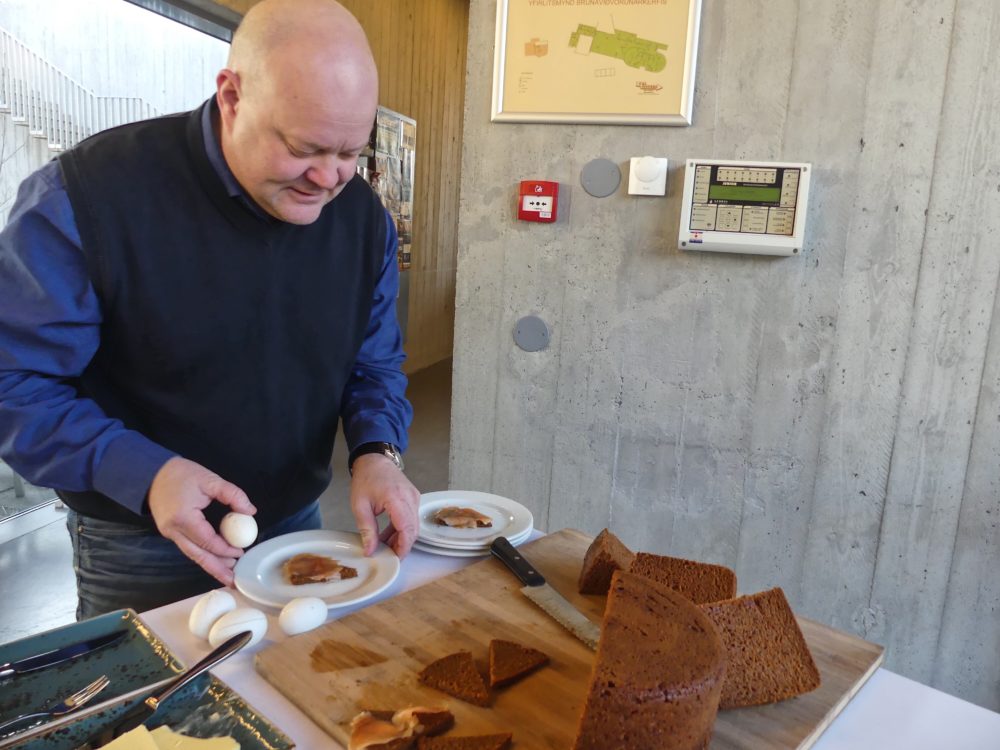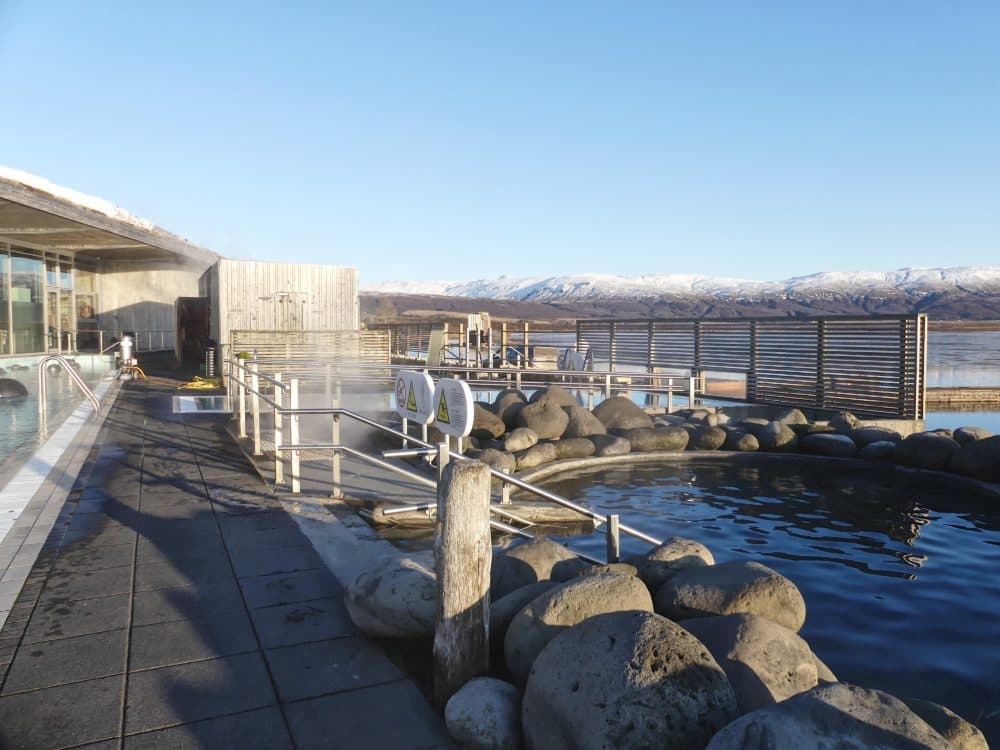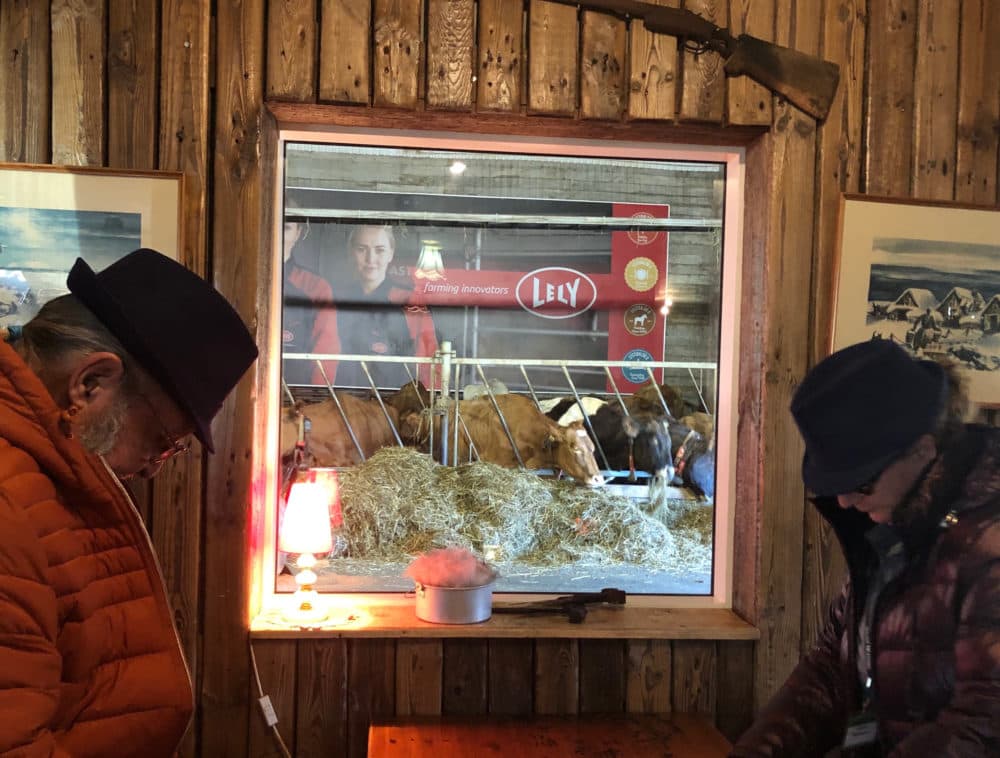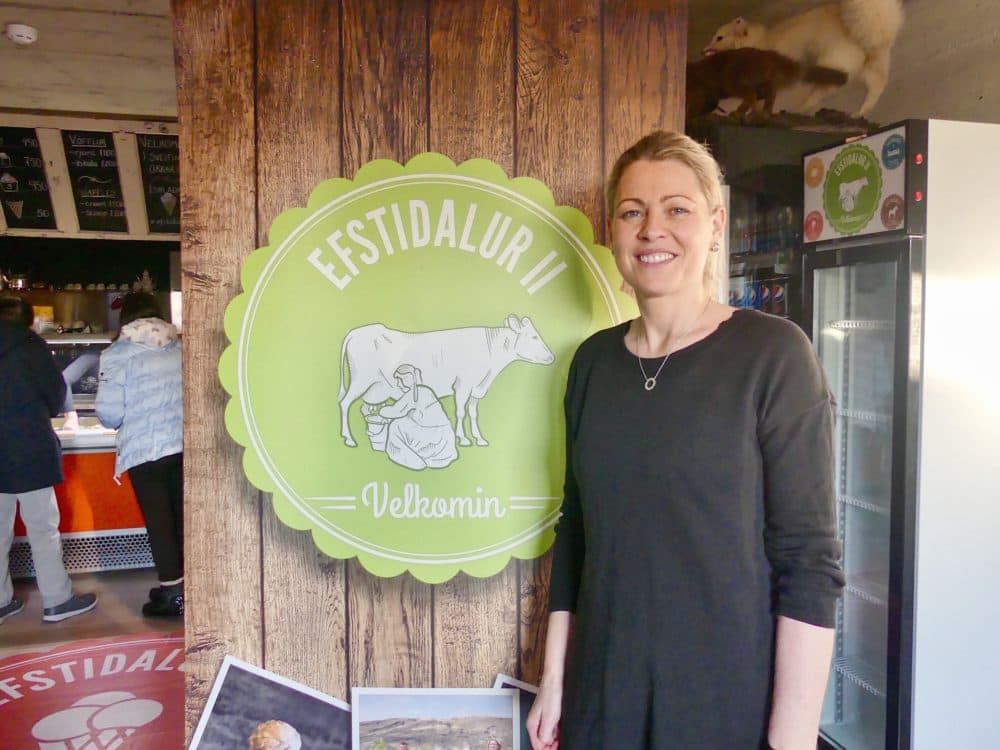Advertisement
Mix, Add To Metal Pot, Then Bury In Hot Lava Sand: How To Bake Bread In Iceland

The Blue Lagoon, a quick drive from Reykjavik's international airport, is a tourist mecca. The man-made pools that draw water from the nearby geothermal plant are open for visitors up to 17 hours a day at the peak of summer. Even in the winter they're filled long before the sun rises.
But 90 minutes northeast of the city, in a largely agricultural region surrounded by mountains and volcanoes, there's another set of geothermal baths and saunas.

"There's no plumbing, no switch on or off … it's just a hot spring," says Siggi Hilmarsson, the managing director of the Laugarvatn Fontana spa.
The property is on the banks of pristine Lake Laugarvatn.
"You're just getting the energy directly from underneath; [the] power of the spring is it's often splashing," he says, standing inside one of the three wooden huts that serve as saunas and steam baths. "The only way to control the temperature in these rooms is by opening up the doors and release the pressure inside."
The so-called "Ring of Fire" region of Iceland, Hilmarsson explains, is a volcanic hotbed punctuated by tectonic cracks that allow hot water to rise up through the water and soil. And if the baths nourish the soul — and he assures us that they do — another Icelandic tradition, he says, nourishes the body. It's called both lava or volcano bread.
The bread is a favorite at the Laugarvatn spa. To show how it's baked, he takes us to the lake — not the kitchen. After a short walk on wet black volcanic sand, we arrive at an area of the beach where steam is rising and the sand literally boils. There, Hilmarsson begins to dig. Eventually we hear a clinking sound.
"There it is," he says as he unearths a large metal pot. He retrieves it with the shovel, careful not to touch the steaming hot metal. He opens the pot with a glove and shows us the steaming bread which weighs about seven pounds.
It's the same bread, he says, that his parents and grandparents baked.
"When they felt like having a good bread, grandma put down bread here; very often when they were expecting guests from Reykjavik … They would pop up a nice warm rye bread from the hot spring,” he says.
Hilmarsson takes half a dozen eggs and places them in a divot in the sand where the water immediately boils around them. The traditional way to eat the bread, he explains, is topped with butter, boiled eggs and smoke trout or salmon.
Advertisement
Back inside the spa, Hilmarsson takes great care slicing and assembling the ingredients. He hands the first slice to his mother, who sits nearby. She smiles and gives a nod of approval.
The bread, he explains, is not only a popular attraction at the spa but an important reminder of the past at a time when the region is rapidly changing.
"We have less snow today than we used to have," he says. "Climate change is obviously affecting the whole world. … They are estimating that in 200 years all the glaciers are gone here if climate change keeps on developing the way it is today."
He says the farmers who populate the area are affected in a number of ways. For one, some trees are growing faster, while others that have long thrived in the area are no longer growing.
"There are farmers that have changed from the original farming," he says, because warmer, and sometimes erratic, weather has resulted in crop failure.
Several miles east up a winding mountain road is Efstidalur Farm, which traditionally produced dairy, hay and some vegetables. There we meet Halla Ros Arnarsdottir. The property, which she runs with her siblings, has been in the family since the 1700s.

She says she's well aware of the issues raised by Hilmarsson — and that her farm is coping by focusing on tourism and the service industry. The farm now features a small hotel, a farm-to-table restaurant and a bustling ice cream stand. Still, she says climate change is top of mind.
"I think about it every day and we try all our best with what we can do about it,” Arnarsdottir says. “And there are things we do, for example. We recycle everything on the farm no matter what it is. We do compost, plastic, paper."
While she knows that those efforts help in the long run, the short term issues are harder to navigate. She recalls what happened two summers ago.
"We had almost no sunshine the whole summer. It's hard to believe there was only one little gap which we could cut the hay and dry it. And we were really concerned if we would have enough hay for all our animals," she says. "And then last year it was totally opposite. We had sunshine every day and we were praying for rain. So we are talking about two crazy years and no one remembers this."
The situation has been brutal for local farmers, she says, to the point where some are even giving up completely.

Cow farmers, for example, are no longer certain they can produce the hay to keep their animals alive.
"They're just about surviving the winter," Arnarsdottir says.
"It's too hard," she adds. "That's what I hear."
Back at Laugarvatn, Hilmarsson says he empathizes with those farmers, not only because of their financial losses but because it signals the loss of a lifestyle. That, he says, makes him even prouder to share his lava bread tradition.
"Since forever basically! Since Vikings!" he says. "My grandmother used to do this, and my mother. A lot of the local people here do it. Of course, like anywhere else in the world you know, life changes … but this has always been the same. So it brings warm memories."
This segment aired on December 23, 2019.


